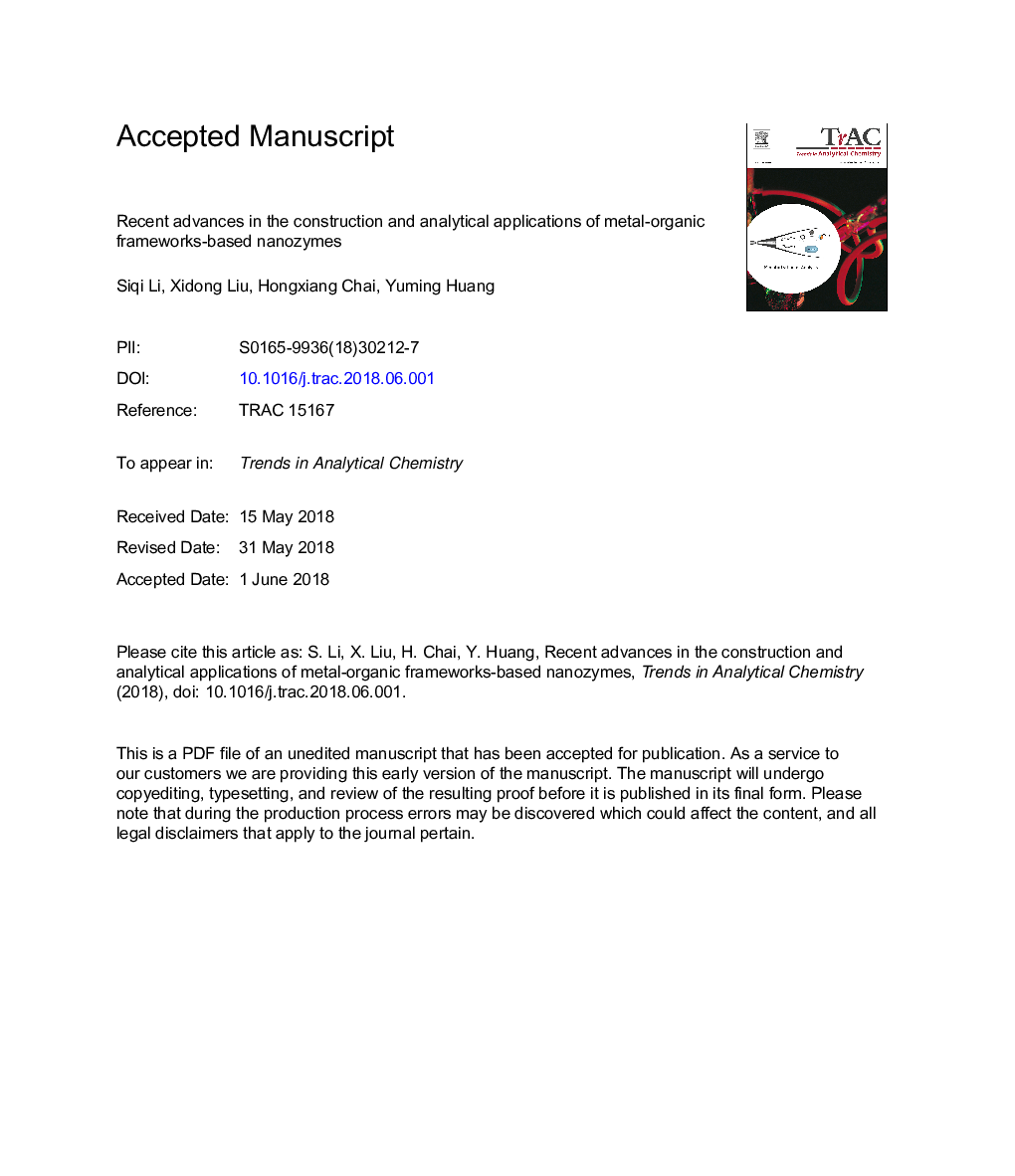| Article ID | Journal | Published Year | Pages | File Type |
|---|---|---|---|---|
| 7687591 | TrAC Trends in Analytical Chemistry | 2018 | 41 Pages |
Abstract
The nanozymes are a kind of synthetic nanomaterials with enzyme-like properties. Metal-organic frameworks (MOFs) are an important class of inorganic-organic hybrid crystals. Their unique composition, structural diversity and size tailorability enable them to be promising for the construction of novel nanozymes. This review intends to summarize the recent advance for the construction of MOFs-based nanozymes and their primary applications in chemical sensing and biosensing. Based on their synthetical strategies, the MOFs-based nanozymes are categorized into four classes: pristine MOFs, MOFs with chemical modification, MOFs-based composites and MOF derivatives. In each categorization, the design and enzyme mimetic activity are discussed. Moreover, the analytical applications of these nanozymes are covered, such as the detection of H2O2, small biomolecules releasing H2O2, reductive small biomolecules, biomacromolecules, heavy metal ions, toxic metabolite of fungi, antibiotics, and so on. Finally, a summary and future perspective on the applications of MOFs-based nanozymes are briefly discussed.
Keywords
Related Topics
Physical Sciences and Engineering
Chemistry
Analytical Chemistry
Authors
Siqi Li, Xidong Liu, Hongxiang Chai, Yuming Huang,
